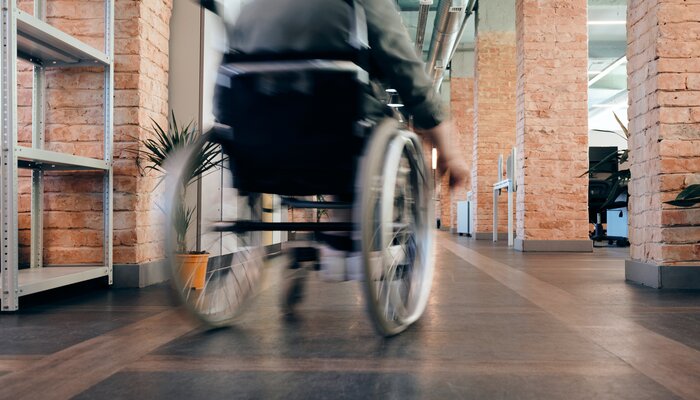Suffering an injury due to someone else's negligence can be a traumatic and financially draining experience. Understanding the personal injury claim process can provide clarity and confidence as you seek compensation for your injuries. This guide offers an in-depth look into the process, ensuring you're well-informed every step of the way.
What is a Personal Injury Claim?
A personal injury claim is a legal action taken by an individual who has suffered harm due to another person's negligence or wrongful act. This could range from car accidents and workplace injuries to medical malpractice or defective products.
Determining Liability and Establishing Negligence
1. Prove Duty of Care
To establish a duty of care, one party must establish that another party owed them one. Someone's safety and well-being is a legal duty. As an example, drivers are responsible for obeying traffic laws and driving safely to keep pedestrians and other drivers safe. The same is true for businesses, which have a duty to keep their premises safe for customers. You must first identify and articulate the defendant's specific duty of care to the plaintiff in a personal injury case.
2. Identify the Breach
Next, the defendant must be proven to have breached the duty of care. An owner of a property can fail to warn visitors of potential hazards in a variety of ways, from speeding to causing an accident. An expert evaluation or surveillance footage may be used to demonstrate that the defendant's actions (or lack thereof) did not meet expectations.
3. Link the Injury to the Defendant's Actions
There must also be a clear connection between the defendant's breach of duty of care and the plaintiff's injury. A personal injury case is often contested on this front. A defendant may argue that the injury was preexisting or that other factors contributed to it. It may be possible to establish this causal connection by collecting concrete evidence, such as medical records immediately following the incident, or by utilizing expert testimony.
4. Show Damages
Furthermore, the plaintiff must specify the harm caused by the defendant's negligence and quantify it. Damages aren't limited to physical injuries. The damages can also include emotional trauma, lost wages, diminished quality of life, and any other financial burdens (like medical bills) associated with the injury. Documentation is crucial in this case. A medical bill, a pay stub, or even a psychological evaluation can support a compensation claim.
It is clear that pursuing a personal injury claim requires a meticulous approach where the plaintiff must build a solid case that encompasses these four key elements. Throughout the process, the plaintiff's argument is reinforced that the defendant's negligence resulted in tangible harm to her.
Steps in the Personal Injury Claim Process
1. Consultation with an Attorney
While not mandatory, hiring an attorney experienced in personal injury claims can significantly increase the chances of a favorable outcome. They can provide valuable insights, handle negotiations, and represent you in court if needed.
2. Investigation and Documentation
Evidence forms the backbone of any claim:
-
Injuries should be documented with medical records.
-
Photograph the accident scene, injuries, and possible causes.
-
Support your account of events with witness statements.
3. Initiating the Claim
This involves formally notifying the responsible party or their insurance company about your intent to seek compensation. It sets the stage for negotiations and, potentially, litigation.
4. Negotiations
Often, settlements can be reached before the courtroom. A suitable compensation amount is determined by negotiating with the defendant or their insurance provider. An attorney can be invaluable here, ensuring that you do not settle for less than you are entitled to.
5. Filing the Lawsuit
If negotiations stall or no agreement is reached, the next step involves taking legal action by filing a lawsuit.
6. Discovery Phase
During this pre-trial phase, both parties gather evidence, request documents, and interview witnesses. A comprehensive fact-finding mission is being conducted in preparation for the trial.
7. Mediation and Possible Settlement
Before the trial, both parties might undergo mediation, where a neutral third-party mediator attempts to help them find common ground. This can lead to an out-of-court settlement.
8. The Trial
In the event that a settlement cannot be reached, the case will go to trial. Judges or juries decide the outcome after both sides present their arguments.
9. Compensation
In the event that the plaintiff's claim is successful, they are compensated. Whether it is a one-time payment or a series of installments, this can be arranged.
All of these steps are not required in every personal injury claim. There are cases that settle early on, and there are cases that need to progress through the entire process.
The Importance of Timeliness
In the world of personal injury claims, time isn't just money—it's justice, compensation, and closure. The principle of timeliness plays a pivotal role for several reasons:
-
Statute of Limitations: Most jurisdictions have a defined time period, known as the statute of limitations, during which a personal injury claim must be initiated. In the event you miss this window, you may lose your right to file a lawsuit, regardless of whether the injury is valid or severe. The period varies by jurisdiction and type of injury, but is typically between one and three years.
-
Preservation of Evidence: As time passes, essential evidence can be lost or become harder to procure. Some witnesses may move away, forget important details, or become less willing to testify. Physical evidence from accident scenes can be cleared or altered. Acting quickly ensures that evidence is gathered and preserved while it's still fresh and accessible.
-
Medical Documentation: Immediate medical attention not only benefits the victim's health but also serves as a contemporaneous record of the injuries sustained. The initial medical records detailing the extent and nature of injuries can be crucial in demonstrating the severity of the injuries as wounds heal.
-
Negotiation Leverage: Demonstrating urgency in pursuing a claim sends a clear message to the responsible party and their insurance company. It indicates that you're serious about your claim, possibly prompting them to engage more genuinely in early negotiations.
-
Mental and Emotional Well-being: Lingering on a claim can be emotionally draining for the injured party. The victim's emotional healing can be hindered by a prolonged process that delays closure. Recovery can be made more proactive with swift action.
FAQs
1. What if I am partially at fault for my injury?
"Comparative negligence" or "contributory negligence" is a concept that applies in many jurisdictions. Any compensation you might receive can be reduced by the percentage of your fault if you are partially responsible for the injury. It is possible for your compensation to be reduced by 20% if you are deemed to be 20% at fault. A lawyer is essential for discussing specifics, since laws vary from state to state.
2. How long does a typical personal injury lawsuit take?
Depending on the complexity of the case, the willingness of the parties to settle, and court schedules, the duration of a personal injury lawsuit can vary significantly. Several years can pass between some cases settling and others going to trial, especially if they go to trial.
3. Do I always need an attorney to file a personal injury claim?
There is no requirement that you have an attorney in order to file a claim for personal injury. You will, however, have a better chance of a positive outcome when you hire an experienced lawyer, particularly if your case is complex. They can help you navigate legal nuances, negotiate for you, and protect your rights.
4. What types of compensation can I expect from a personal injury claim?
Economic damages and non-economic damages can be classified as compensation, often referred to as "damages." Medical expenses, lost wages, and rehabilitation expenses are examples of economic damages. An example of non-economic damages is pain and suffering, emotional distress, and loss of enjoyment of life. There may be cases in which punitive damages are awarded with the goal of punishing the defendant and deterring similar behavior in the future.
5. What happens if the responsible party doesn't have insurance?
The claim process can be complicated if the responsible party does not have insurance or does not have adequate insurance. There are still options available to you, including pursuing compensation directly from the individual or tapping into your own insurance coverage (e.g., uninsured or underinsured motorist coverage in car accidents). It's crucial to consult with an attorney to explore all available avenues.
Conclusion
Navigating the personal injury claim process can be intricate and challenging, but with a comprehensive understanding and potentially the assistance of an attorney, you can confidently seek the compensation you deserve. Remember, it's not just about financial redress; it's about justice and ensuring that such negligence is curtailed in the future.
Don't let legal jargon stand in your way and get clarity regarding personal and advertising injury. The guides by Disability Help will equip you with knowledge for your business's protection.





